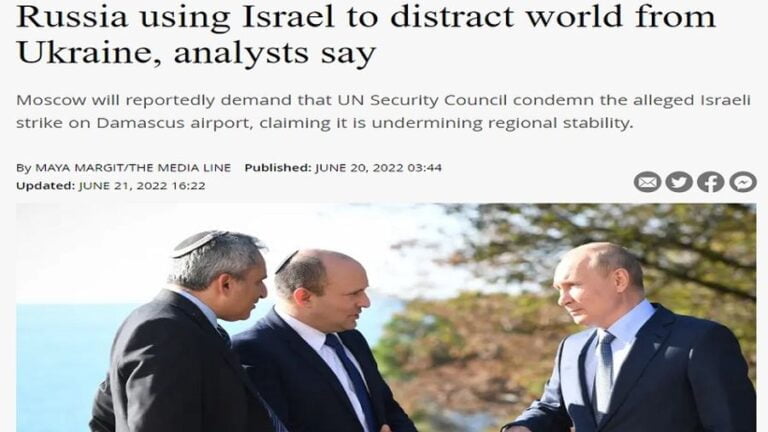Why Is the Washington Post Rehabilitating President Xi’s Image in the Western Consciousness?
To be clear, this remarkable narrative event doesn’t mean that the Sino-American discussions over a New Détente will ultimately succeed, but just that enough progress has thus far been made by these two superpowers over the past month to begin preconditioning the Western public to accept a potential series of mutual compromises aimed at establishing a balance of influence between them.
A remarkable narrative event occurred on Sunday when the Washington Post (WaPo), which is regarded as one of the US’ premier platforms for managing public perceptions and considered to be connected to its national security apparatus, began rehabilitating President Xi’s image. In their piece about how “A more pragmatic Xi Jinping launches a global charm offensive for China”, the outlet praised the Chinese leader for the positive interactions that he shared with his Western counterparts since October.
The reason why this is worthy of analysis is because the US has repeatedly insisted that China is its only peer competitor capable of reshaping the international system. The ongoing New Cold War between the US-led West’s GoldenBillion and the jointly BRICS– & SCO-led Global South of which China is considered by many to be the leader (for now at least) is over whether the global systemic transition should largely retain the trappings of unipolarity or continue evolving towards multipolarity.
Be that as it is, “The Ukrainian Conflict Might Have Already Derailed China’s Superpower Trajectory”, hence why “Kissinger’s Prediction About A Forthcoming Policy Recalibration By China Is Probably Correct”. This globally renowned China expert forecast in early October that the confluence of systemic crises beginning with the trade war and continuing into COVID and the UkrainianConflict would compel the People’s Republic to reach out to the West in order to de-escalate tensions for the time being.
Late last month, “The Daily Beast Shared Some Surprisingly Accurate Assessments Of Chinese Interests” that placed President Xi’s positive interactions with his Western counterparts into their appropriate grand strategic context. Those meetings preceded the resumption of talks between the American and Chinese Defense Ministers in Cambodia, which signaled that discussions over a NewDétente are actively underway between them when analyzed in sequence exactly as Kissinger presciently predicted.
The preceding concept refers to their attempt to reach a series of mutual compromises aimed at establishing a pragmatic balance of influence that’ll serve as the “new normal”. Considering their superpower status in the present bi-multipolar intermediary phase of the global systemic transition, it follows that they have shared interests in retaining the status quo instead of allowing those Indian-led multipolar processes unleashed by the Ukrainian Conflict to continue proliferating uncontrollably.
Their talks have seemingly made some progress ahead of Secretary of State Blinken’s planned trip to Beijing early next year as evidenced by WaPo’s attempt to rehabilitate President Xi’s image in the Western consciousness. This remarkable narrative event wouldn’t have been undertaken had that outlet’s national security partners not tacitly approved of them doing so seeing as how their countries are still officially locked in a fierce competition over the direction of the global systemic transition.
Up until this point, President Xi was framed by them as a “power-hungry anti-Western dictator” that’s supposedly obsessed with China surpassing the US in all respects as soon as possible for purely dogmatic ideological reasons. This weaponized information warfare narrative was meant to generate public support for America’s attempts to comprehensively contain the People’s Republic despite the increasing risk of this resulting in a major war by miscalculation.
That’s why it’s so surprising that one of its premier platforms for managing public perceptions is now conspicuously walking back its prior demonization of the Chinese leader by proactively informing their targeted audience about how “pragmatic” his “global charm offensive” has been. The dog whistle being blown by this powerful tool of the US’ national security apparatus is that those comparatively less influential outlets should follow its lead in gradually rehabilitating President Xi’s reputation.
This is being down to facilitate the potential success of these two superpowers’ ongoing talks over a New Détente with regards to preconditioning the public to expect a series of mutual compromises between them aimed at establishing a pragmatic balance of influence that’ll serve as the “new normal”. The past half-decade of demonizing the Chinese leader reshaped public perceptions of him in the Western consciousness, which is why WaPo needs to prepare its audience for this possible outcome.
Failing to do so could result in serious cognitive dissonance if folks were all of a sudden told by their leaders that China is no longer their so-called “top peer competitor” and that the US has instead decided to roll back its prior comprehensive containment campaign against the People’s Republic. To be clear, this remarkable narrative event doesn’t mean that those two superpowers’ discussions over a New Détente will ultimately succeed, but just that enough progress has thus far been made to take that step.
Looking forward, observers should closely monitor other prominent Western outlets to see whether they start following WaPo’s lead. It’s expected that more of them will slowly but surely do so provided that progress on their ongoing discussions continues ahead of Blinken’s planned visit to China early next year. It’s too early to confidently predict the contours of whatever series of pragmatic compromises might be agreed to, but that doesn’t mean that experts shouldn’t startbrainstorming now just in case.
The indisputable facts are that: 1) Kiev struck deep into Russia on Monday to hit two strategic airfields; 2) the West is signaling to Moscow that it had nothing to do with the attack; and 3) and Kiev built upon Monday’s momentum by striking another Russian airfield on Tuesday. What’s most disturbing about all of this is that the drones were able to enter Russian airspace in the first place and reach their targets without being shot down ahead of time.
Kiev carried out three drone strikes against Russian airfields in the span of just the past two days, with Monday’s “slightly” damaging two of its target’s strategic aviation assets according to Moscow’s Ministry of Defense and Tuesday’s hitting a fuel tank. The Kremlin insists that none of these three thus far inflicted any critical damage, yet they all raise very serious concerns that’ll have to be addressed sooner than later.
Looking beyond the so-called “fog of war” that naturally prompts objective observers to be skeptical of all sides’ official claims about the damage they’ve either inflicted or suffered, there’s no doubt that Monday’s two strikes reached deep into the Russian hinterland. Strategic airfields in Ryazan and Samara Regions were hit, which are both hundreds of kilometers away from where Russia is conducting its special operation.
Kiev allegedly modified Soviet-era jet drones, meaning that no Western arms were used in either of Monday’s attacks. This aligns with the Wall Street Journal’s (WSJ) report from the same day claiming that the US secretly modified the HIMARS that it sent to Kiev in order to prevent them from firing long-range missiles deep into Russia. While it can’t be discounted that Kiev could have coordinated its latest drone strike spree with its patrons, the latter clearly don’t want their fingerprints on these attacks.
Russia is supposed to be left with the impression that Kiev’s attacks are being carried out independently of its Western overlords’ wishes, whether that’s actually true or not. If it is, which is doubtful, then this would suggest that Kiev is working behind their back to unilaterally escalate the conflict. The second scenario, meanwhile, would suggest that they do indeed want to escalate the conflict but hope to retain a degree of so-called “plausible deniability” so that they don’t directly suffer from the consequences.
In any case, the indisputable facts are that: 1) Kiev struck deep into Russia on Monday to hit two strategic airfields; 2) the West is signaling to Moscow that it had nothing to do with the attack; and 3) and Kiev built upon Monday’s momentum by striking another Russian airfield on Tuesday. What’s most disturbing about all of this is that the drones were able to enter Russian airspace in the first place and reach their targets without being shot down ahead of time.
Until Russia rectifies this problem by either comprehensively neutralizing Kiev’s capacity to carry out more such drone strikes and/or robustly defending its airspace from all such forthcoming intrusions, this trend is expected to continue. After all, it carries with it immense soft power significance for the attacking side even if the on-the-ground consequences are reportedly minimal. Even patriotic Russian voices are echoing the preceding assessment as evidenced by one of Rybar’s latest messages.
That’s the name of a popular telegram channel that’s passionately in support of their country’s special operation, which also has an accompanying English-language channel and unofficial Twitter account. The latter shared an admittedly harsh take on Monday’s drone strikes that can be read in full here, which says that Russia’s rivals are literally laughing at its inability to properly defend its strategic nuclear forces from conventional strikes by their crumbling neighbor.
The latent national security implications of that observation are chilling since Western hawks might mistakenly interpret this development as signaling that they too can directly attack Russia’s strategic nuclear forces without fear of significant repercussions like provoking a nuclear war. Of course, to be absolutely clear, there’s no doubt that Russia’s nuclear triad would spring into action if NATO dared to strike such targets, but the danger is that ideologically deluded Western hawks forget about this fact.
What therefore needs to happen as soon as possible is for Russia to react in such a way that removes any such doubts about its willingness to defend its strategic nuclear forces regardless of whoever the aggressor might be and irrespective of the damage that their attacks inflicted on their targets. It can’t be taken for granted that it’ll do so, but that would be the best-case scenario for reaffirming the principle of “Mutually Assured Destruction” (MAD).
Nobody should misinterpret the above as implying that Russia’s failure to nuke Ukraine would signal weakness since Moscow also mustn’t overreact to what just happened, but there’s also no doubt that it definitely crosses yet another line that its supporters didn’t expect to be violated. This follows the suspicious sinking of the Moskva that Kiev claimed credit for despite the Kremlin’s denials, the assassination of Darya Dugina, and the Crimean Bridge terrorist attack.
If precedent is anything to go by, however, then another major air campaign against Ukraine might be in the cards after Moscow reacted that way in the aftermath of the last-mentioned provocation. Nevertheless, no matter how crippling the consequences of that campaign might be, it would still on the surface represent a predictable reaction that could risk equating an attack against Russia’s strategic nuclear forces with the bombing of a bridge unless it truly destroys all of its target’s capabilities.
These strategic calculations suggest that Russia is placed in a bit of a dilemma. Its “shock and awe” response to the Crimean Bridge terrorist attack two months ago has normalized nationwide strikes against dual-use Ukrainian infrastructure, which means that replicating that same reaction in response to the latest provocation wouldn’t have the same soft power effect, especially since the prior campaign didn’t serve to deter Kiev from carrying out this week’s drone strike spree.
So-called “decapitation strikes” against its opponent’s military and/or political leadership might thus be a more appropriate reaction, though Moscow has thus far been reluctant to do so despite previously threatening that it remains an option if certain lines are crossed. There’s no doubt that Kiev just crossed perhaps one of the most sensitive lines possible after attacking Russia’s strategic nuclear forces so the Kremlin would thus do well to seriously countenance this course of action.
With this in mind, Russia’s forthcoming tasks are several: 1) militarily respond in such a way that Kiev is successfully deterred from ever crossing any of Moscow’s lines again; 2) ensure that the aforesaid response is also interpreted by Russia’s Western rivals in the same way so as to compellingly dissuade any hawks from mistakenly thinking that their country can follow in its proxy’s footsteps; and 3) robustly defend its airspace from all such forthcoming potential intrusions. All are difficult, but still achievable.







